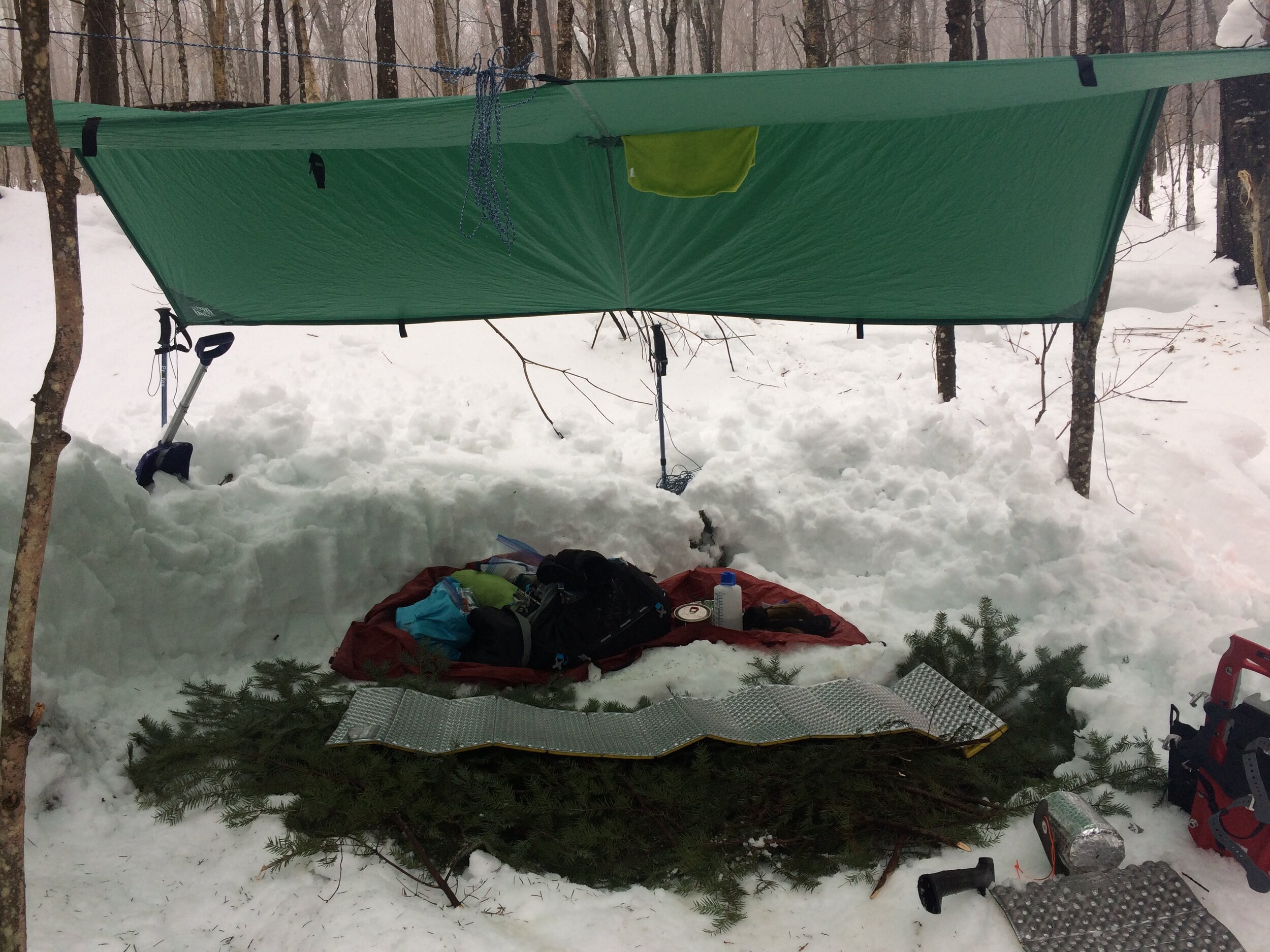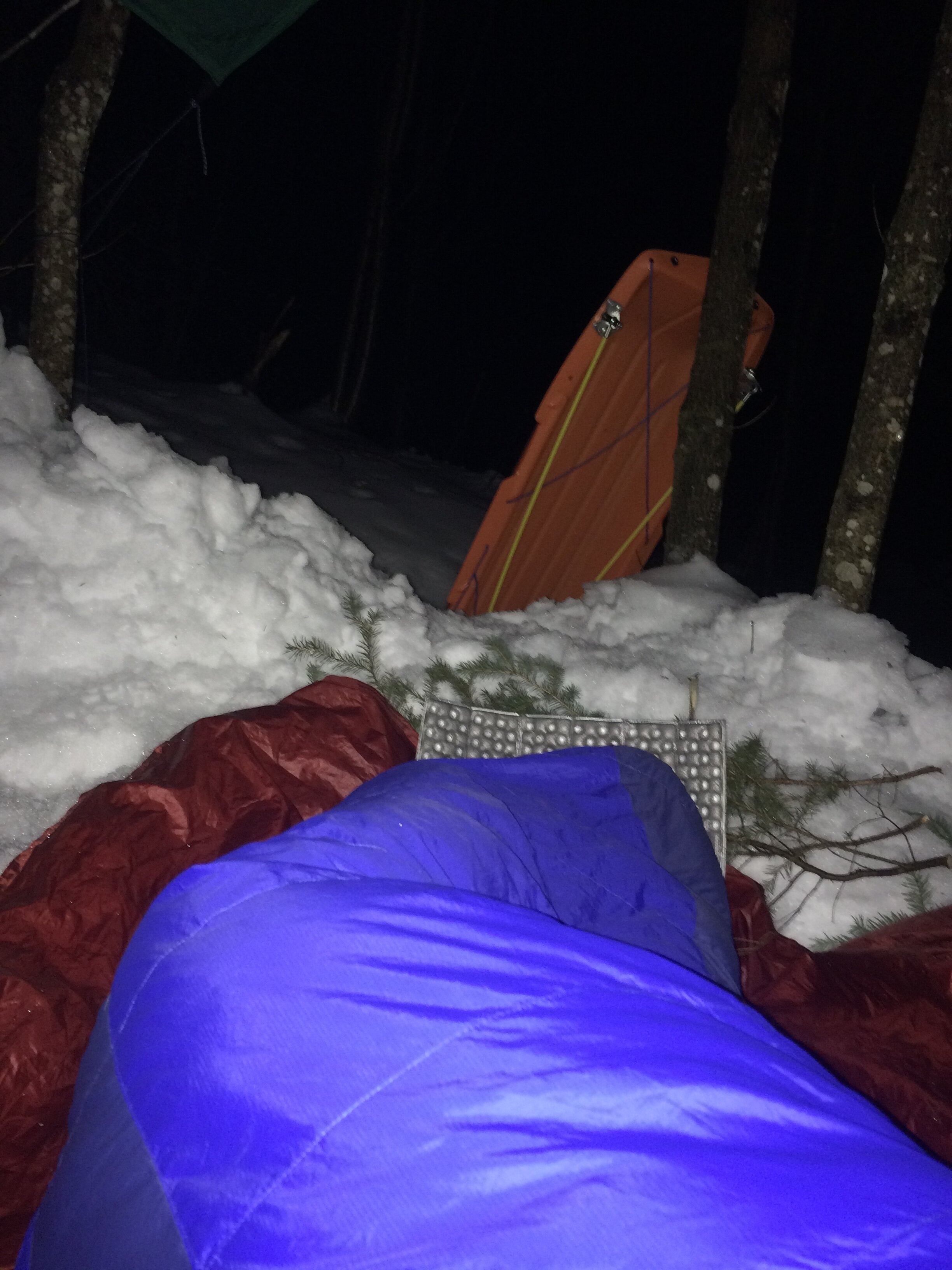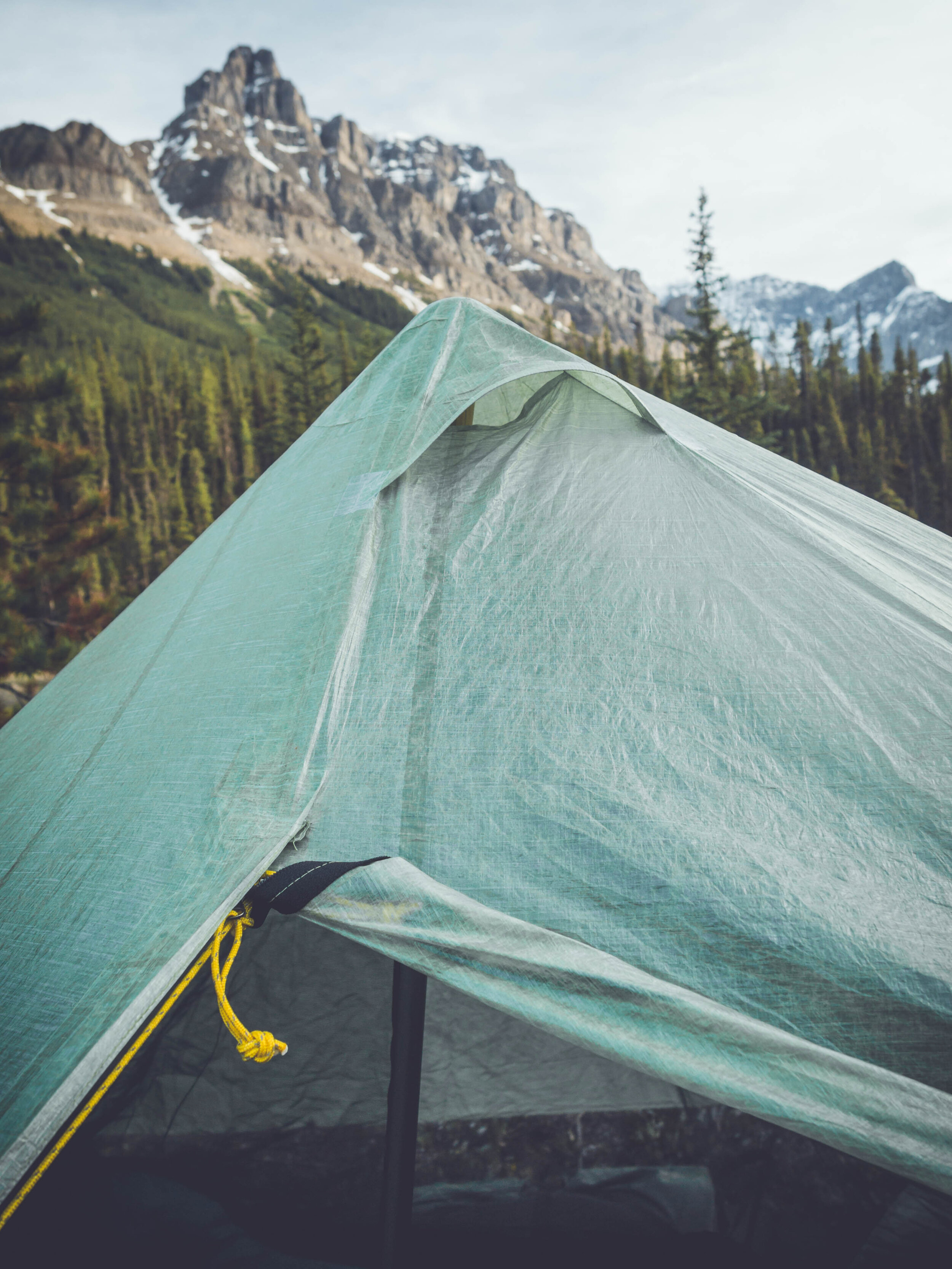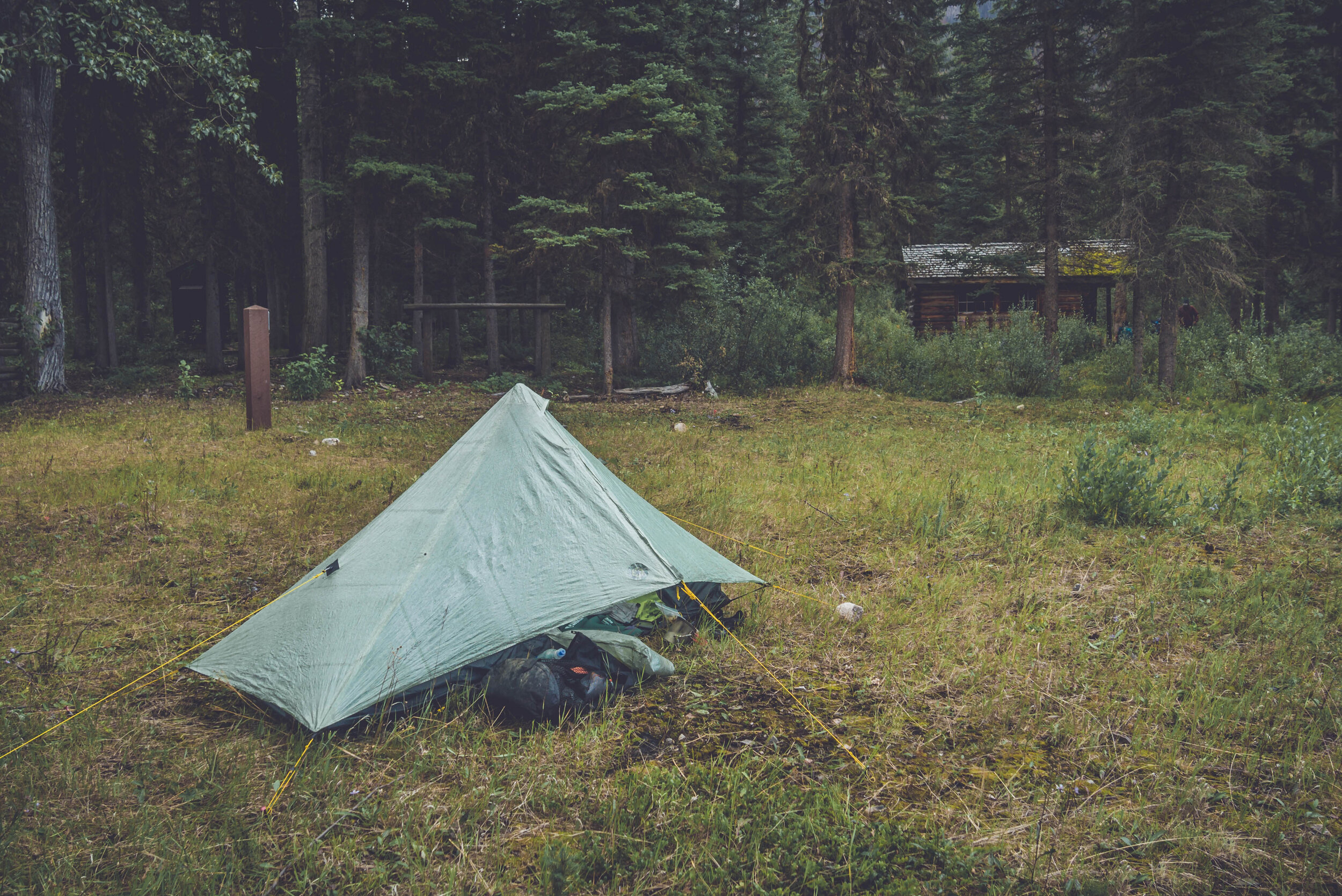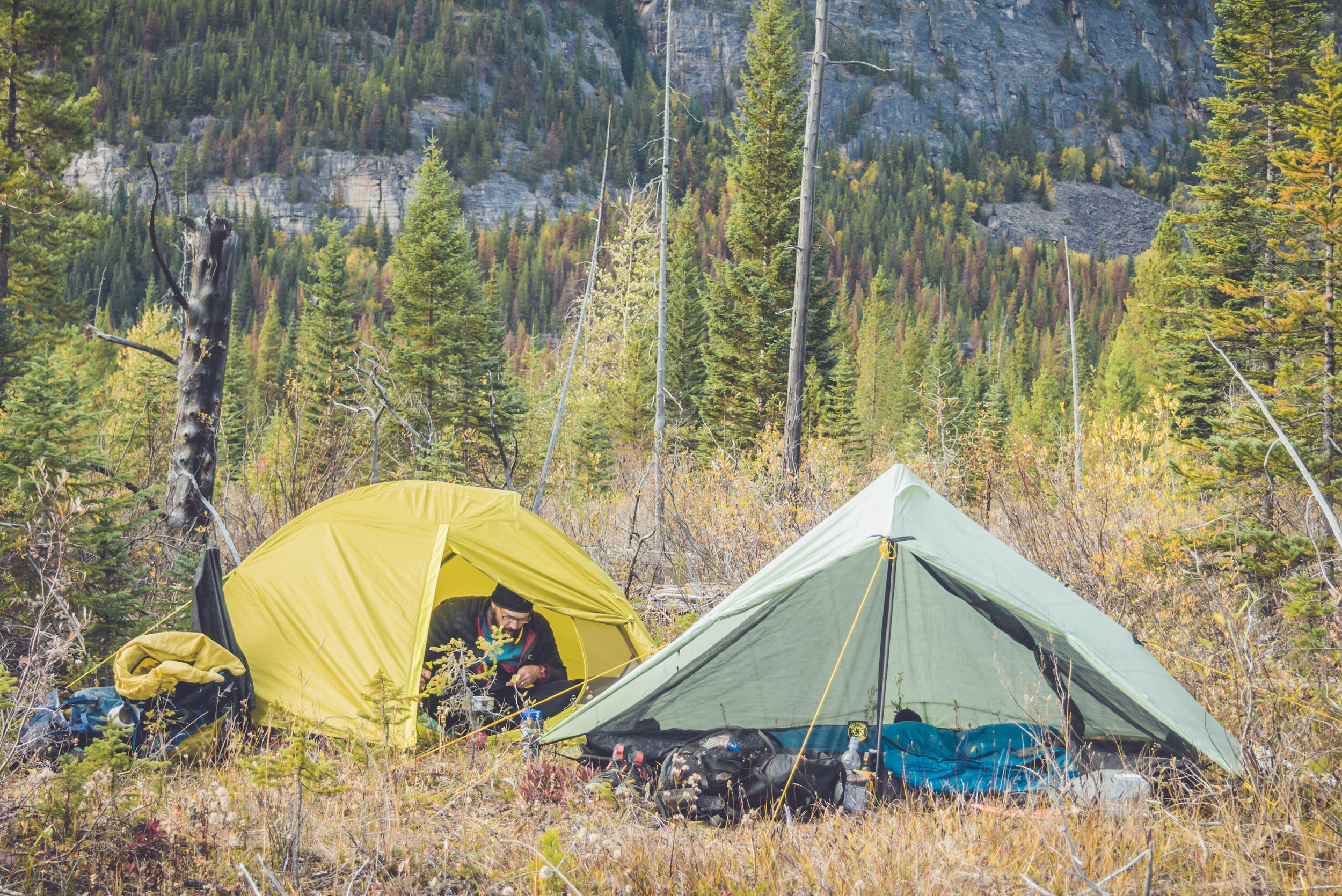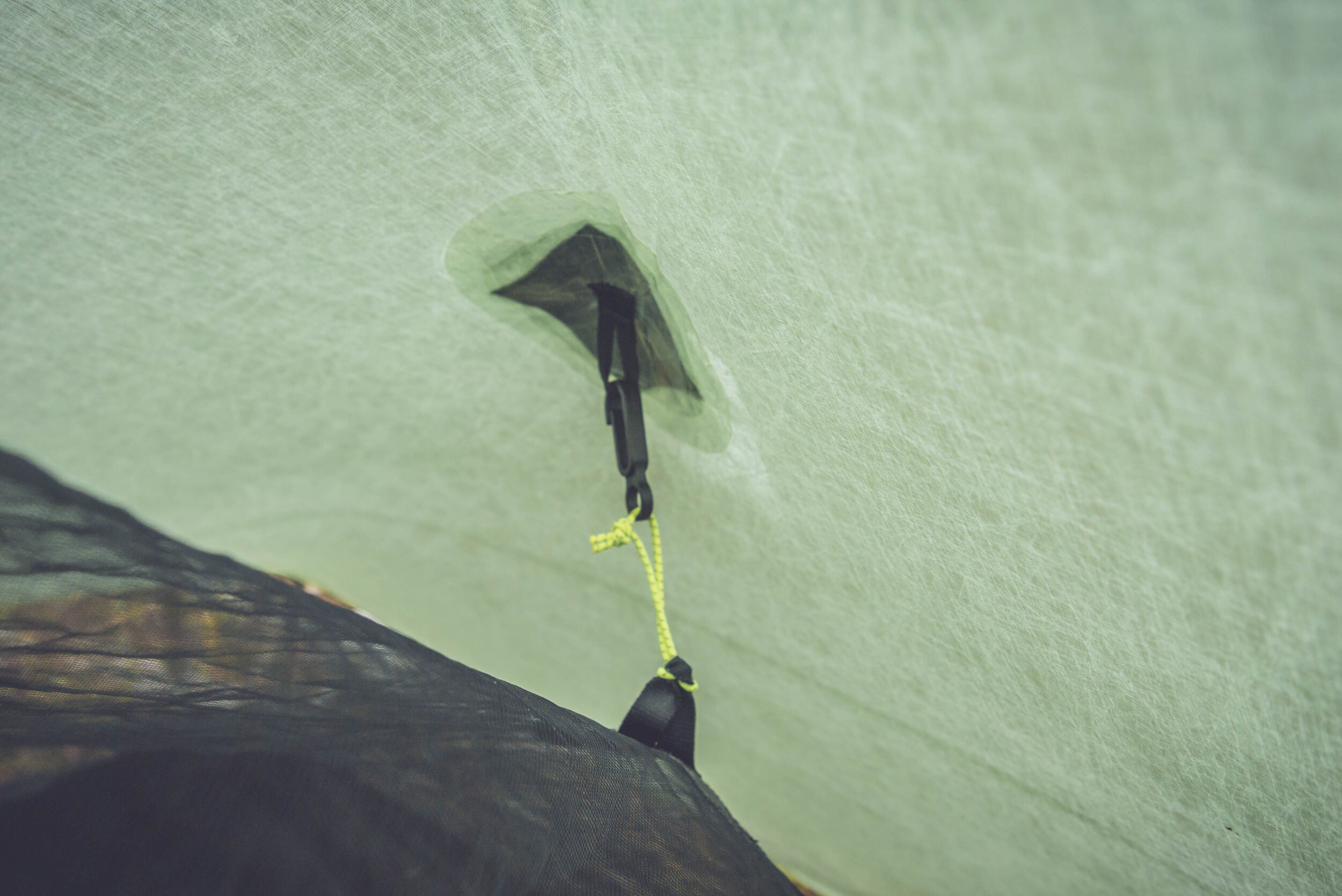Gear Review | SMD Deschutes Zero-G Tent
Lake Alexandra, Banff National Park (Canada).
Over the years, really enjoyed going on solo adventures in the wilderness. Being completely alone deep in a forest or out there in the mountains is really amazing. But ever since I started my solo outings I have been struggling with finding the right shelter. Carrying the 2-person tent I use with Andrea, the MSR Hubba Hubba NX 2 became cumbersome and I tried many different options before finally stumbled upon something I was quite satisfied with.
The first thing I tried was a tarp. While it made sense in Ontario where the flat terrain isn't quite exposed to the elements, it proved to be a little trickier in Alberta where I like to hike on river flats, in alpine meadows and in places where you can expect to experience the 4 seasons in one day on any given day of the year. I tried adding a mesh bivy (Enlightened Equipment Recon Bivy) to get more protection from the wind but it didn't really cut it for me.
Camping under a tarp in the middle of the winter in Algonquin Park, Ontario (Canada).
Building snow walls to shelter me from the wind was perfect, but quite time consuming.
Tarp camping at the Tunnel Mountain Campground (Banff National Park, Canada) in late winter. The wind kept blowing all night.
Using the EE Recon Bivy at Tibbitt Lake in the Northwest Territories (Canada).
Tarp camping along the Howse River (Banff National Park, Canada). I also used the Recon Bivy (not pictured) that night and it kept me warm as the wind was crazy in the morning and the tarp was flapping all over the place.
But all these experiences with different types of shelters had to be lived for me to really know what I wanted. And what I wanted was first and foremost: the lightest double-wall 1-person shelter I could find. Why the lightest? Because I was about to add 8-lbs of packrafting equipment in my backpack. I also wished I could find a shelter that could be supported by only one trekking pole as I only hike with one. Flexibility was important for me as my backpacking trips are happening year-round, meaning that being able to leave the mesh net tent at home when the bugs are gone in the shoulder seasons would be a great advantage. Finally, I wanted to give Dyneema Composite Fabric (DCF) a try as not only is it crazy light, it also has the advantage of not sagging when wet, something I always found annoying on my sil-nylon MSR Hubba Hubba. I finally chose the SMD Deschutes Zero-G w/Serenity Net Tent.
First night in my SMD Deschutes Zero-G. Agawa Bay, Lake Superior (Canada).
The weight of this tent is jaw-dropping. 227 grams for the tent and 312 grams for the removable Serenity Net Tent. Total weight if using the mesh insert: 539 grams!!! It is insanely light.
The quality of both the tent and the mesh insert is excellent. The stitching is perfect and the construction is solid. The seam tape on the tent was applied properly. I did replaced the factory installed guyline cordage with a different one, but that’s a personal preference. To this I added Micro Line Locks as they are by far my favorite kind of tensioners.
Reinforced tie-outs and velcro closure at the bottom of the doors to release the tension on the zipper.
The little vent opening at the top.
While the Deschutes used by itself provides 39ft² of living space (because of the vestibule area), when you add the Serenity Net tent, this area shrinks down to 15ft², and the other half turns into a vestibule for gear storage. It is a small space, but I already knew that and I don’t need anything bigger. There is still enough space around my sleeping pad to put the usual necessities: headlamp, phone, cameras, water bottle… My pack usually stays in the vestibule.
My usual vestibule organization: backpack, cook kit, bear spray and water bottle.
The Serenity Net insert clips into each corner and gives it a nice elevated bathtub to prevent any splash back from the rain.
The distance between the net and the tent is generous and being 5’10”, I never had any issues with either my feet or my head touching the inside of the tent. I like how Six Moon Designs used a snap button for the doors. I always hated the usual toggle and loop system on my other shelters. I am now able to operate the doors in a fraction of a second if the rain starts falling down in the middle of the night.
The Deschutes Zero-G offers some flexibility in regards to pitching height. The interior height can be anywhere from 40″ to 48″ tall. At 40″, like seen below, the tent will almost be at ground level. This would be the perfect setup for a very windy or stormy night. Part of the design is that the front doors are shorter than the rear section. This is something I personally like because it means that even during a storm, I am able to see outside from the comfort of my bed.
The Deschutes Zero-G pitched low.
Note the gap under the front doors. Because of this, pitching the tent with its rear section in the wind is really important.
Alexandra River valley, Banff National Park (Canada).
Here it is pitched a little higher, approximately 3″ from the ground. It provided more airflow.
Surprise Creek Campground, Mount Assiniboine Provincial Park (Canada).
One could also sleep with both doors rolled up and it would provide lots of ventilation.
On this particular night, I had to use the side tie-out points to give myself a little more room as I decided to keep my packrafting gear inside the tent to prevent damages from porcupines.
Athabasca River Crossing Campground, Jasper National Park (Canada).
Along the Chaba River near Fortress Lake, Jasper National Park (Canada).
Wind is not a problem with the Deschutes, as long as you pitch it lower to the ground and you stake the extra guy-lines on each side. With a tight pitch, there will be no material flapping in the wind. But getting the right tautness takes practice. Once you get the hang of it, you’ll get a perfectly pitched tent every night.
[Update - September 2021] The ability for the tent to withstand very strong winds had not been tested so far. The reason is quite simple, I tend to avoid wide open and exposed locations when I set up camp. On this particular night, the forecast completely missed the wind storm that me and a few other campers had to literally survive at 7,500 feet of elevation. I had to change location twice before setting up the tent just below a cliff band to shelter me further more from the wind. What you see in the video is 30 seconds of an 8-hour night. It was re-lent-less and I spent the entire night holding on to my trekking pole. I got out once at around 2AM to check on the tent pegs. All in all, the tent held up admirably. I attribute this performance to the perfect soil I had to deal with as my pegs didn’t bulge even if I felt I was going to fly away into the night. But this wet and compact soil also created this flapping on the tent fabric because it allowed the tip of my trekking pole to dig into the soil a solid 2 inches deep. It made the tent height lower and reduced the tautness of each side of the tent. So, yes, this tent will survive extreme windy conditions if the pegs are solidly inserted into the ground and the tent tension if right.
The morning after a sleepless night… Piper Pass, Kananaskis Country (Canada).
Using the tent only, it is very spacious. There’s enough place to use my deflated packraft as a groundsheet under my sleeping mat. And it also gives me access to the space at the back that is usually blocked by the net tent.
Lake Alexandra in the Alexandra River valley, Banff National Park (Canada).
My backpack now fits at the back.
The tent and the net insert pack down really small. I use a Zpacks Tall Dry Bag to store both along with my stakes. I use one side pocket on my backpack to carry the entire shelter. See below from a few different angles what it looks like on the outside of my backpack.
Headroom is decent inside the tent and I am able to change clothes easily. I can also sit without touching the top. I like to eat in my vestibule in the morning and while it’s possible, it’s a little cramped. Again, having such a small shelter is a choice and this choice comes with comprises.
I have used it a few times in snowy conditions. I doubt a trekking pole supported shelter will handle a massive snow load, especially at the rear where it tapers off. I will use it again this winter but this is not a winter shelter I would use on a regular basis. During a snowfall, the snow will stick to the Deschutes Zero-G and tapping on the walls of the tent will be required to make it slide off. That’s one disadvantage of the DCF fabric. It does not shed snow as easily as the slippery sil-nylon. I haven’t had any issues with condensation in the winter.
An emergency camp at Larix Lake in Mount Assiniboine Provincial Park (Canada).
Early spring snowfall along Porcupine Creek in Kananaskis Country (Canada).
As for rain, the summer of 2019 of the wettest of the last 10 years in the Canadian Rockies and I did experienced lots of rainy nights, but I always stayed dry inside the tent.
I modified the shelter by adding a mesh pocket inside the Serenity Net Tent to keep my camera from moving around at night when I am tossing and turning.
I also added guy-out points on the side of the Serenity Net Tent as well as on the interior walls of the Deschutes. This allows me to have more space when I need to sleep with all my gear inside the tent. On the picture below, the shock cord is attached to the fly guy-out but the fly itself is not fully extended outward. [Update: as of 2020, I believe SMD reviewed the design of the Serenity Net Tent and it now includes these extra tie-out points]
All in all, I am really satisfied with the Deschutes Zero-G tent from Six Moon Designs. I became more and more comfortable with it over the summer. I look forward to use it even more in the next few years and I will surely update this review for long-term durability updates. I love it so much that I ended getting its big brother, the Haven Zero-G for when I go backpacking with my partner Andrea. It’s basically the same design, but wider as it’s a 2-person shelter.

